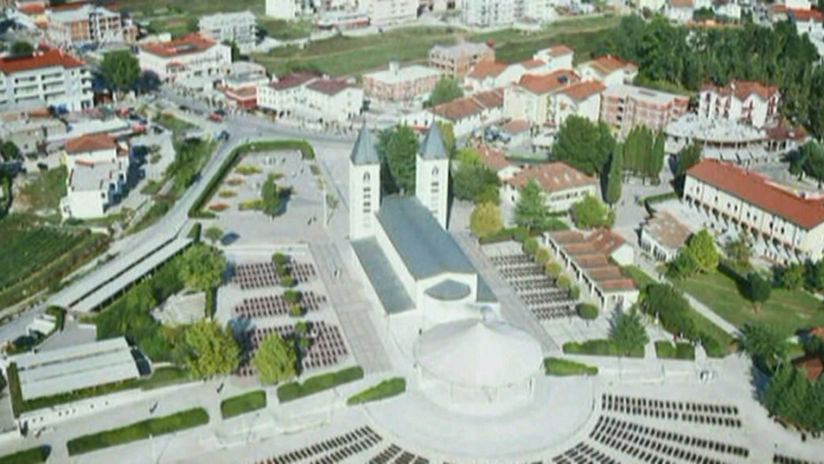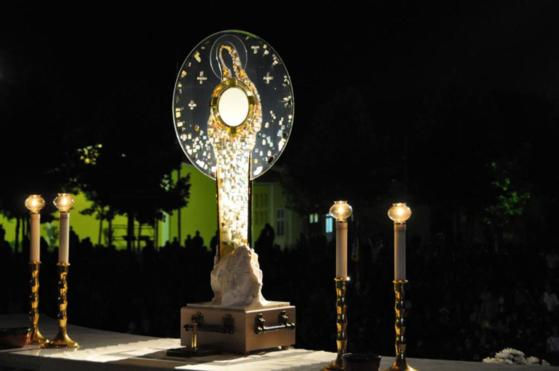Saint James Church
Medjugorje, Bosnia & Herzegovina
Est. June 22, 2011

Medjugorje is a town located in the mountainous country of Bosnia and Herzegovina on the Balkan Peninsula in Southeastern Europe. For more than 40 years, it has been a center of spiritual renewal and particularly a focal point of prayer for peace, arising in a country with a long, rich, yet complicated history. This history includes periods of foreign influence, such as the 400-year Turkish occupation, followed by Austro-Hungarian domination, and finally, a communist regime. During World War II, the Medjugorje region (then part of the Kingdom of Yugoslavia) was occupied by Nazi Germany and Fascist Italy. Approximately one million Bosnia inhabitants: Bosnians, Serbs, Croats and Jews were killed, nearly half of whom were civilians, resulting in one of the highest death tolls by population in World War II. Ethnic cleansings and blind nationalism were the biggest of that time. After the war, the region fell under communist control and endured ongoing ethnic tensions that escalated into multiple brutal ethnic conflicts. The four-year Bosnian War from 1992 to 1995, often referred to as the Bosnian Genocide, was one of the most brutal and vicious wars in modern Europe, marked by notorious war crimes committed on Muslims and Christians: Orthodox and Catholic. Executions, ethnic cleansings, violence toward women, mass killings, were committed by each party of the conflict. The nation and all its ethnicities continues to grapple with the aftermath of the war and its enduring divisions. In 2003 Saint John Paul II on his last pilgrimage to Bosnia stated the necessity for “healing wounds and achieving a genuine purification of memory through mutual forgiveness.” He also noted, “The root of every good and, sadly, of every evil is in the depth of the heart. It is there that change must occur, making it possible to renew the fabric of society and to establish human relationships which favor cooperation between the vital forces present in the country.” This is a brief overview of the challenges faced not only by this small country, which has steadfastly pursued its sovereignty. In this context, the spiritual center that emerged in 20th-century in Medjugorje, in Herzegovina holds particular significance. Comunità Regina della Pace’s Eucharistic Monstrance is housed in Saint James Church in the village of Medjugorje, Bosnia and Herzegovina. The parish was established in 1892 and construction of the parish church was completed in 1897. The church was quite grand, for its time, but due to the unstable ground on which it was built, its walls soon began to crack, and the building started to sink. Shortly after World War I, plans for a new church, not far from the original site, began. Construction took place from 1934 until the new church was consecrated on January 19, 1969 and is now the center of sacramental and prayer life not only for parishioners but also for pilgrims. The enclosed park, created on the east side of the sanctuary, commemorates the location of the former parish church. The church is also associated with an alleged Marian apparition, and an estimated 50 million pilgrims have visited the site.









